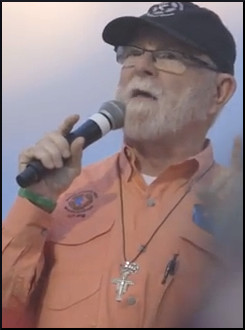
This post is in essence a continuation of last week’s “Exciting Development in Austin,” so a reader who missed that one might want to catch up.
What will go on there
Disabled, chronically homeless people are at a great disadvantage in many ways. In most places, the local taxpayers are also affected by the medical bills that result from so many people living in insalubrious conditions, with untreated physical maladies. Community First Village will help everyone – the residents, by enabling their improved health; and the larger community, by reducing the hospital bills that result from life in the rough.
Located outside Austin, CFV will be a serene and health-positive environment where a great deal of healing and strengthening will take place. Adequate nutrition, nights of unbroken sleep, and an on-site medical facility will help the residents regain levels of vitality and functionality they have not felt for years. Most will be able to actively take part and contribute to the village’s success. We mentioned many activities last time, and people are already making furniture and growing crops.
A strong recycling program is planned. In the carpentry and welding workshops, skills will be taught and learned. The place will have WiFi, so a motivated person could conceivably sell crafts and other products online. The literature speaks of “micro-business opportunities for employment for residents interested in finding a job with employers assisting within this program,” and also suggests possibilities for occasional work at the nearby Travis Exposition Center.
Vision and hard work
The project’s first phase is expected to be done by the spring of 2015. It was kicked off by a groundbreaking ceremony in late August, with some of the prospective residents turning over symbolic shovelfuls of earth.
On that occasion, House Rep. Eddie Rodriguez (D-Austin) received heartfelt thanks, because he sponsored a bill that exempts CFV from property taxes. Passing that bill will no doubt turn out to be one of the smartest moves the legislature ever made. As far as other people and entities who deserve thanks, please forgive any omissions, and post a comment at the end to set things straight!
<iframe width="560" height="315" src="https://www.youtube.com/embed/D5wTyPeXZ4Q" frameborder="0" allow="accelerometer; autoplay; clipboard-write; encrypted-media; gyroscope; picture-in-picture" allowfullscreen></iframe>
The development firm Bury Inc. is involved with the community’s design and MileStone Community Builders LLC with the actualization. H-E-B is helping to start up the commissary, and the local nonprofit organization Caritas will provide caseworkers. Students from the University of Texas School of Architecture designed many of the structures. At Lake Travis High School, the student council and cheerleaders spearheaded a fund drive called “Bring the Homeless Home” which raised $10,000. And of course thousands of volunteers have pitched in and will be donating even more time and energy going forward.
Paying for their stay
Dealing with a hardcore bureaucracy like Social Security is a daunting task even for a housed person with access to all the needed papers and a fully-operational consciousness. For someone who doesn’t own a file cabinet and suffers from physical limitations, pain, and disorientation, these challenges can seem insurmountable. House the Homeless does an amazing job of helping individuals apply for SSI disability status so they can use their benefits to pay the very reasonable rent.
The main driving force is Alan Graham, whose outreach ministry Mobile Loaves and Fishes has been working toward the project for years. Graham, described by journalist Marty Toohey as “a devout man with a sly sense of humor,” sees Community First Village Community as a “promised land” for people who have experienced some of the worst aspects of life on earth. After a recent tour of the property, Toohey wrote:
Graham was careful to note the place is intended to serve the chronically homeless — the portion of the homeless population that, due to mental illness or substance abuse or other issues, cannot keep a home under typical circumstances. For chronically homeless people, said Graham, who is considered one of the nation’s experts on the subject, halfway houses and other “transitional housing” are ultimately ineffective.
One of the most exciting results so far is how Graham and the rest of the CFV support system have inspired other municipalities to step up. A recent OregonLive.com headline reads,
Tiny houses as affordable housing? Austin beats Portland to punch, Eugene follows suit
Is that impressive, or what? Closer to home, a local blogger known as “The Lone Spanger” wrote,
It seems to me that with the continued support of volunteers, donors, and the city, CFV will surely be a success story in the history of homeless housing developments and provide a progressive model for future housing coordinators to follow. I’m looking forward to watching the program blossom and hope it makes a positive impact on the city’s morale towards encouraging more communities like this.
Please visit the Community First Village website to see how you can help!
Reactions?
Source: “Westbanker inspires homeless village,” Statesman.com, 09/03/14
Source: “LTHS students work together to help homeless,” Statesman.com, 09/24/14
Source: “Austin project takes new approach in aiding homeless by avoiding ‘transitional housing’,” TheRepublic.com, 09/18/14
Source: “Tiny houses as affordable housing? Austin beats Portland to punch, Eugene follows suit,” OregonLive.com, 08/22/12
Source: “Hope For the Homeless At Community First Village,” ChallengerNewspaper.org, 08/19/14
Source: “Lake Travis HS Cavaliers – Bring the Homeless Home,” YouTube
Image by mlfnow


